A friend of mine bought a Zero Compromise ZC527 (that means 5 to 27 power magnification) riflescope and a Spuhr mount for his Ritter & Stark 6.5 Creedmoor rifle. Before he used it himself he gave TFB the opportunity to test and review it, and the results can be found in this rather long article (2800+ words and pictures).
I had a faint memory that I had visited Zero Compromise Optics‘ booth at IWA, but couldn’t really remember if they were a low or a high-end manufacturer. I was more leaning to them being a low-end manufacturer, but as I started reading about the brand and asked some friends within the PRS shooting community I quickly learned how wrong I was. Lesson learned.
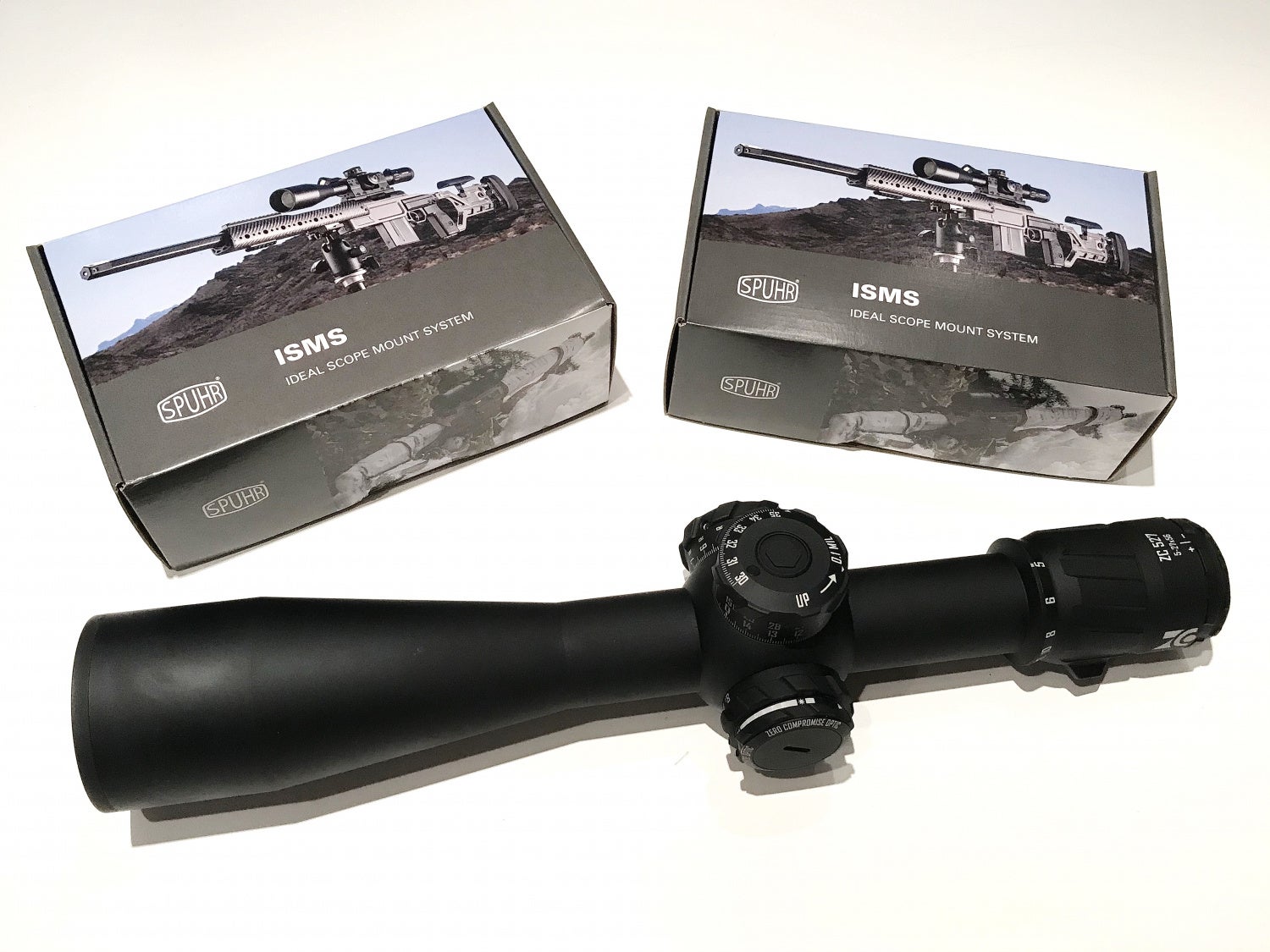
Along the way, I also got to know the price for the ZC527, which is around $3,600, and understood I had an interesting review in front of me.
To be honest I was a bit skeptical. I think we can all be accused of being a bit conservative and reserved to new brands, especially in high-end segments where terms like “best in the World” is used like salt & pepper on a steak.
About a year ago, after SHOT Show 2019, Marcus Hom wrote an article on Zero Compromise Optics and their products. For instance, he describes that ZC are using glass and lenses from European Schott AG and the massive 36 mm tube.
The beginning of this article is going to have very black & white pictures, but as you scroll down you’re going to see colorful pictures through the reticle.

All of the turrets are very easy to read and if you lift the turret to unlock it you will find an indexing mark. The feeling as you twist the turrets up or down, left or right is very tactile. For the parallax, there is no tactile feeling, but the illumination has a small detent so you know when it is shut off to save battery.
Adjusting your zero requires 2 different set-screws and it’s easy to adjust. There is also a Return To Zero function. Once the elevation turret is set to “zero” at the bottom of the travel, you will have 0.5 mil below this point under most scope mounting parameters.
The illumination has night-vision compatible levels, not visible to the normal eye, indicating that ZC might be looking for other customers than civilian ones. I don’t see that the scope wouldn’t live up to those expectations, and I’m sure that the brand and the sales would get a very nice boost if that happened.
I checked the reticle on maximum brightness and it’s not daylight-bright, but this is not a real disadvantage.

The ZC527 is built by hand and undergoes multiple tests and inspection points prior to packaging.
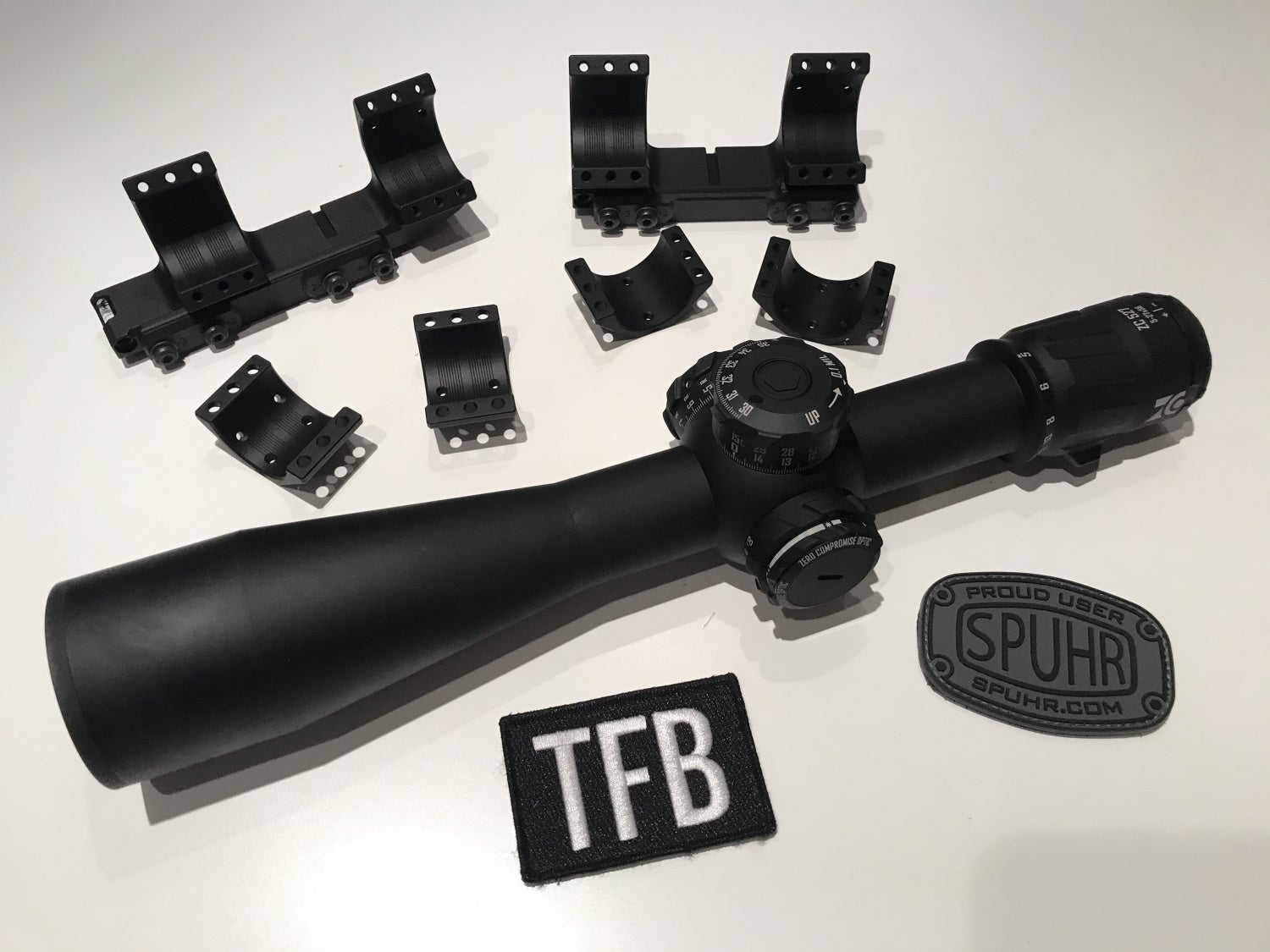
Spuhr cantilever mount to the left. I recommend this type of mount for AR-style Picatinnys only, or if your rail is too short.

The price for a ZC527 is $3,600. You can find it at Mile high Shooting, for instance. The TFB patch is invaluable as it’s a gift from James.

The Spuhr Fix It sticks are really nice to have. It contains a Spuhr-specific torque kit containing two Fix It sticks, a 25 in/lb and a 45 in/lb torque limiter, and two each of standard length and extended length Torx 20 bits.

As the opportunity was there, here you can see the Zero Compromise ZC527 in the middle (matt black) with a Schmidt & Bender 5-25×56 PMII (top) and a Schmidt & Bender 5-20×50 PMII Ultra Short (bottom). Notice the compact size of the Ultra Short, and with illumination it needs a special Spuhr mount as there is no room for the normal rings.  The ZC sight is “Made in Austria”. Their office is in Margarethen am Moos, Austria. They also have an office in Orofino, Idaho.
The ZC sight is “Made in Austria”. Their office is in Margarethen am Moos, Austria. They also have an office in Orofino, Idaho.
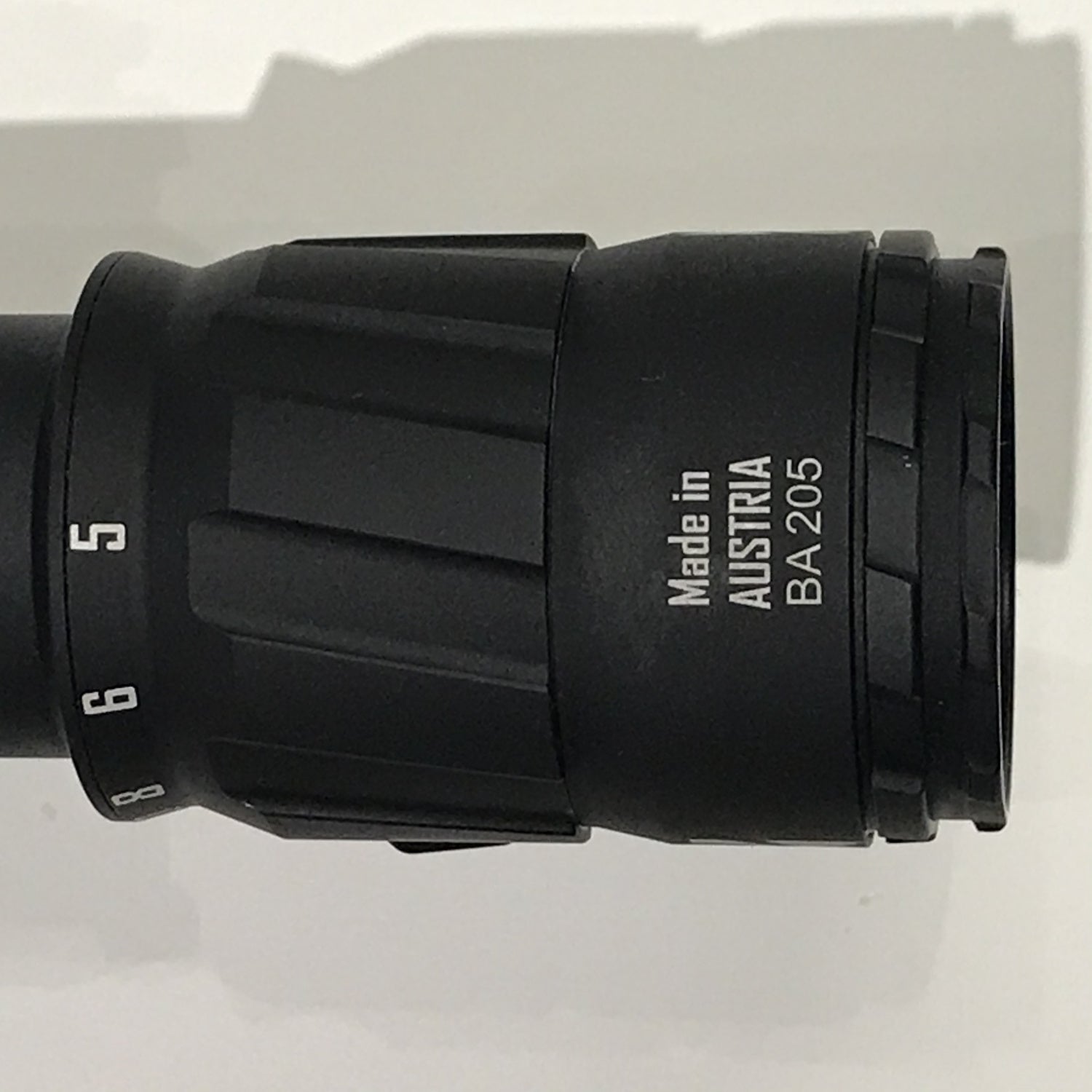
The bottom side is flat, making it easier to level the scope with the Spuhr wedge.

The readings on the turret are very easy to see. To be honest, the difference in appearance between the 34 mm and the 36 mm tube is hardly visible.
We did try to check if the ZC527 was tracking correctly. Shoot a zero, click up-down and back and shoot again. We couldn’t see any issues with the tracking, and frankly, the opposite would have surprised me.

Zero Compromise Optic. All letters, digits and markings are clearly visible.

Looking into the ZC527, shooter’s view of the controls.
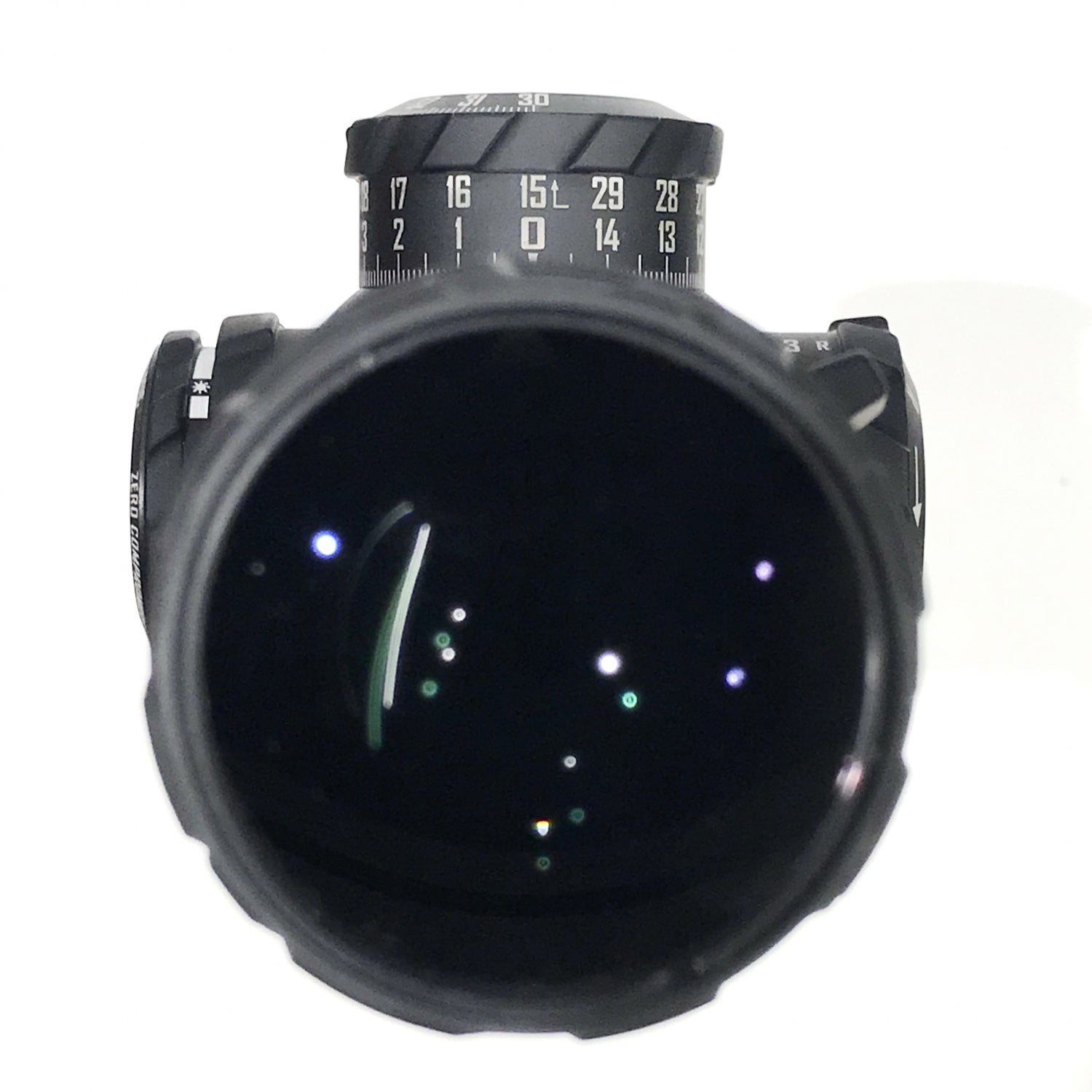
To the left of the scope, you find the parallax adjustment (inner wheel) and illumination (outer wheel). There is a detent when the light is shut off, and it feels just right.

Below you can compare the surface finishing between the Schmidt & Bender 5-25×56 and the ZC527.
As you can see the ZC527 is very matte in comparison. I am not saying that one is better than the other, just highlighting the difference. If you’re a sniper you’re going to do a $10 spray can job on it anyway.
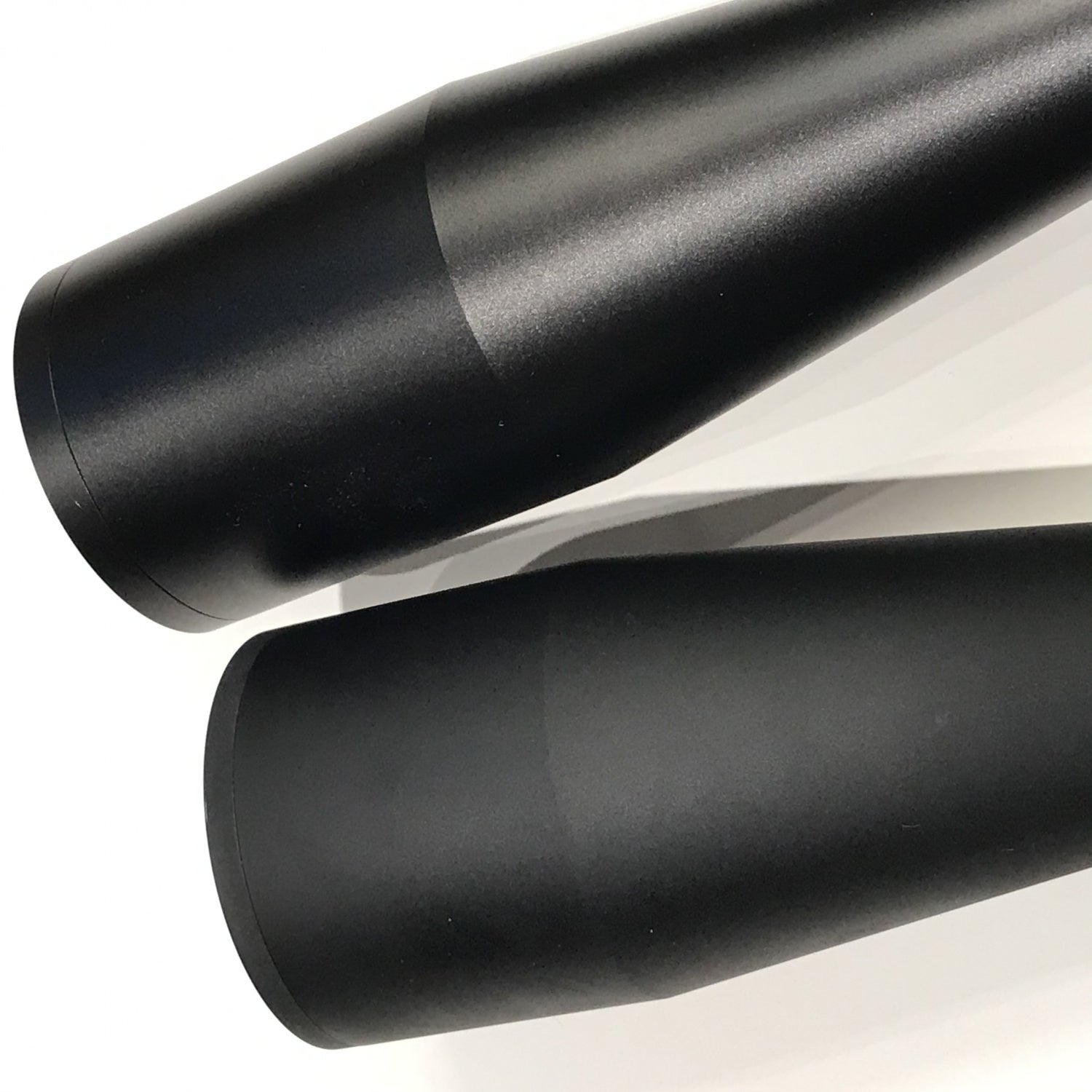
Again, the S&B 5-25 PMII versus the ZC527. You can notice the luster in the S&B surface finish. The S&B has a rubberized zoom ring while the ZC527 has a small wing. The S&B zoom has a little bit less friction than the ZC527, and I think S&B got it just right.
However the difference is very small between the two, and I would have liked a wing on the S&B as well. This can be rectified by a third party throw lever, for instance from Throwlevers.com.

The Mount: Spuhr SP-6602 – (Ø36 H38mm 6MIL)
Very few manufacturers offer a mount for 36 mm tubes, but Spuhr is one of them. They actually make quite a lot of different versions. Should you require a cantilever or a QD version, Spuhr’s got them!
The SP-6602 is a 6 MIL/20.6 MOA mount. The weight is 273 g/9.6 oz and the height is 38 mm/1.5” with a length of 128 mm/5.04”. The mount is priced at €309 / 410 USD. Customers in the USA should contact Mile High Shooting directly.
Below: Unboxing the SP-6602. There is a 10-degree wedge included so you can set up the scope horizontally.
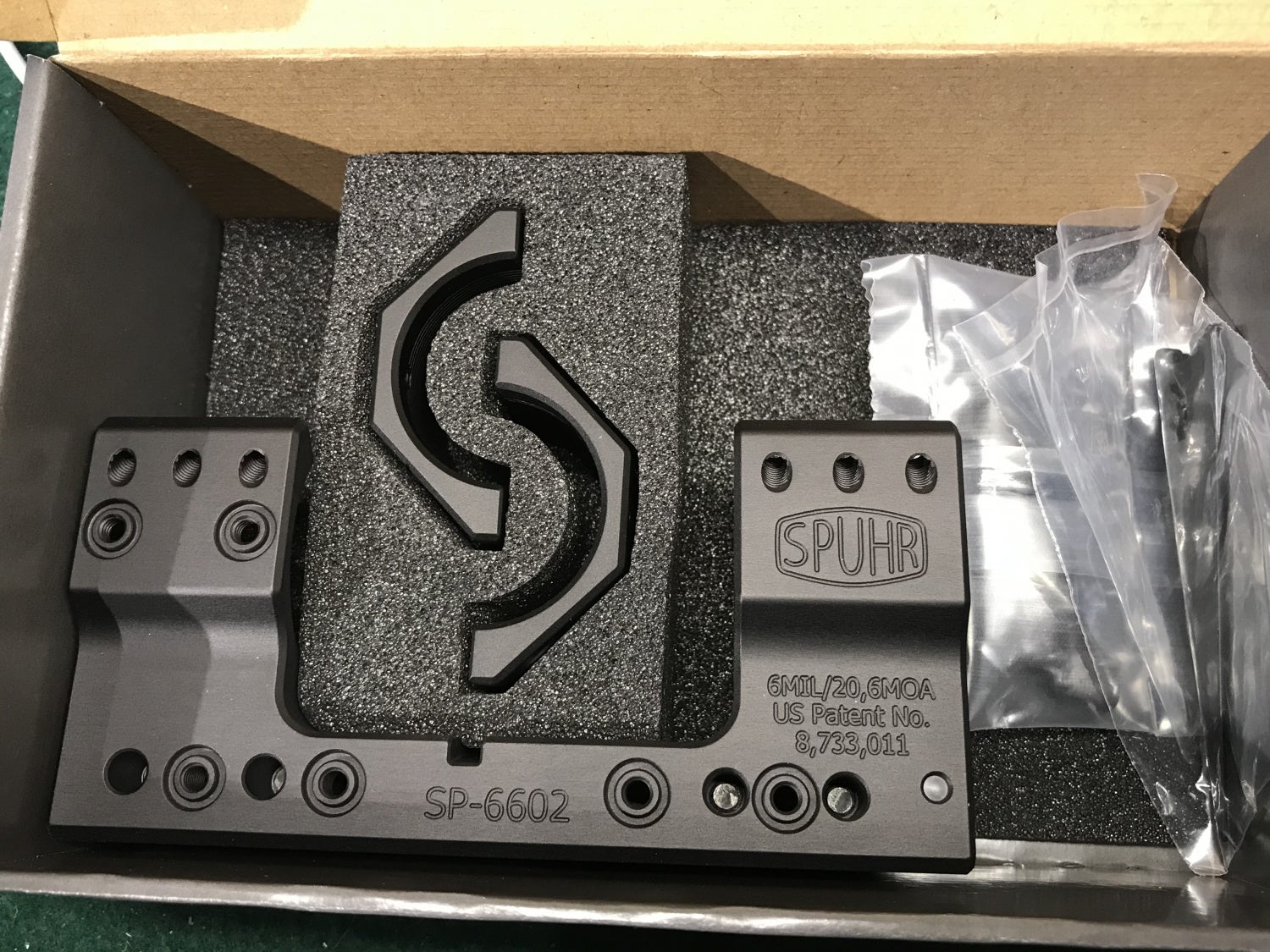
Below: Note that the pieces (rings) are different: one is called A-60 and the other A-61. The A-61 I usually mount closest to the barrel, as it has the Spuhr interface to mount a red dot on any of the extra positions.

The beginning of the marriage between the SP-6602 and the ZC527.
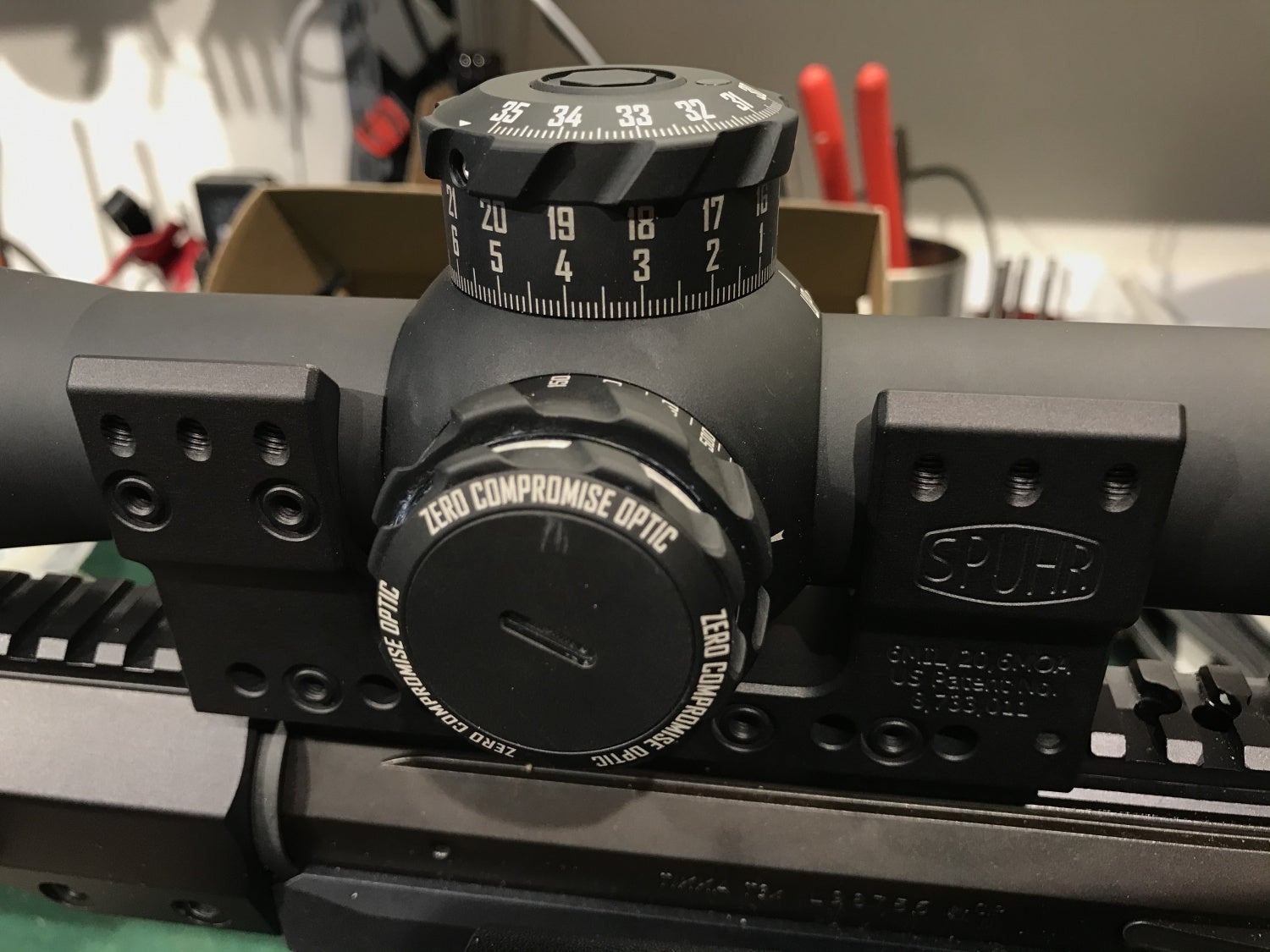
Finally together, mounted on a Tikka T3x TAC A1 in 6.5 Creedmoor.

View from above.
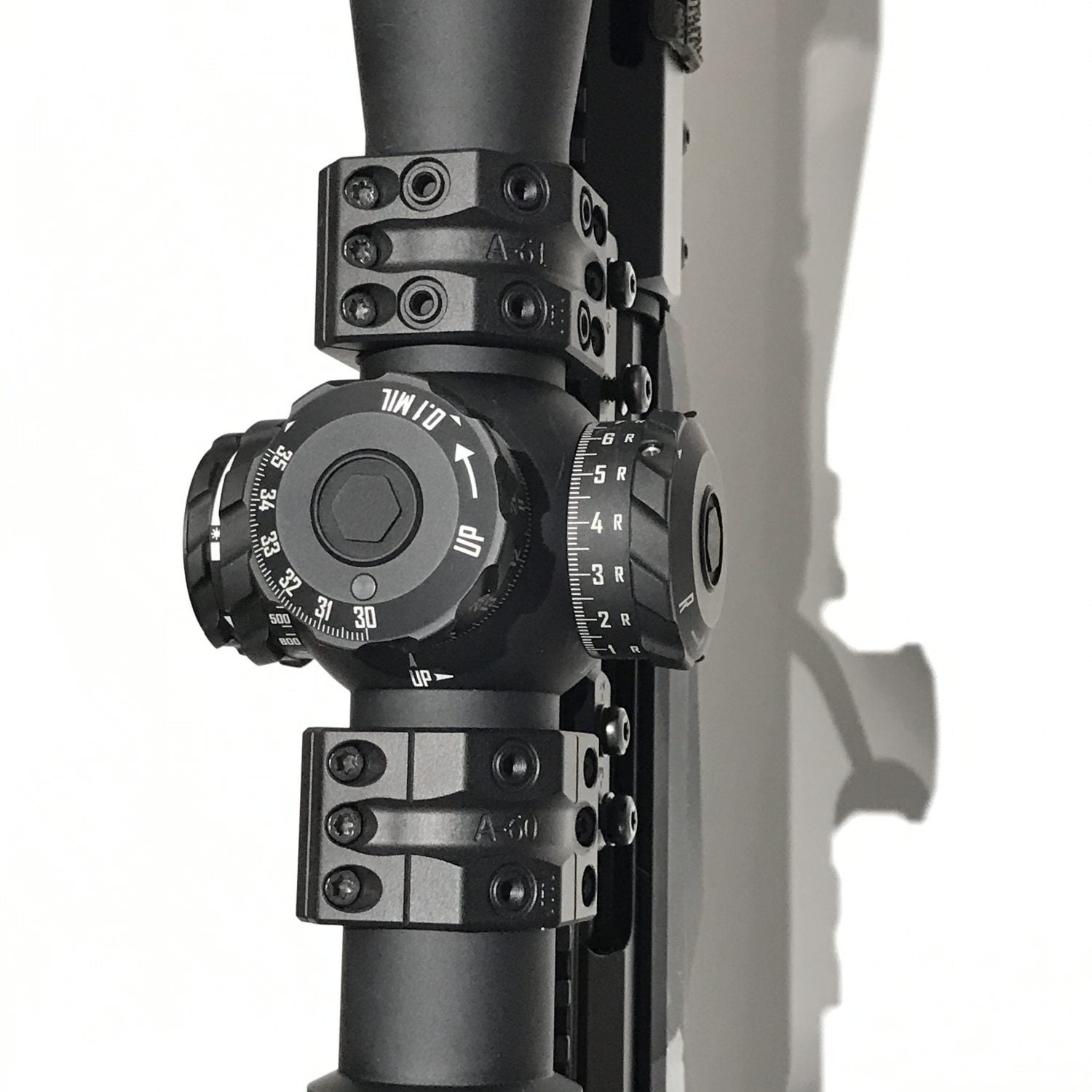
Changing the battery on the ZC527 is easy. The electronic components have a Limited Lifetime Warranty of 2 years against defects in materials and workmanship, under normal use, from the date of your purchase.
The rest of the scope comes with an owner transferrable Lifetime Warranty for mechanical and optical defects in materials and workmanship for the lifetime of this product from normal use.
Note the Magpul ARCA rail under the Tikka’s handguard.
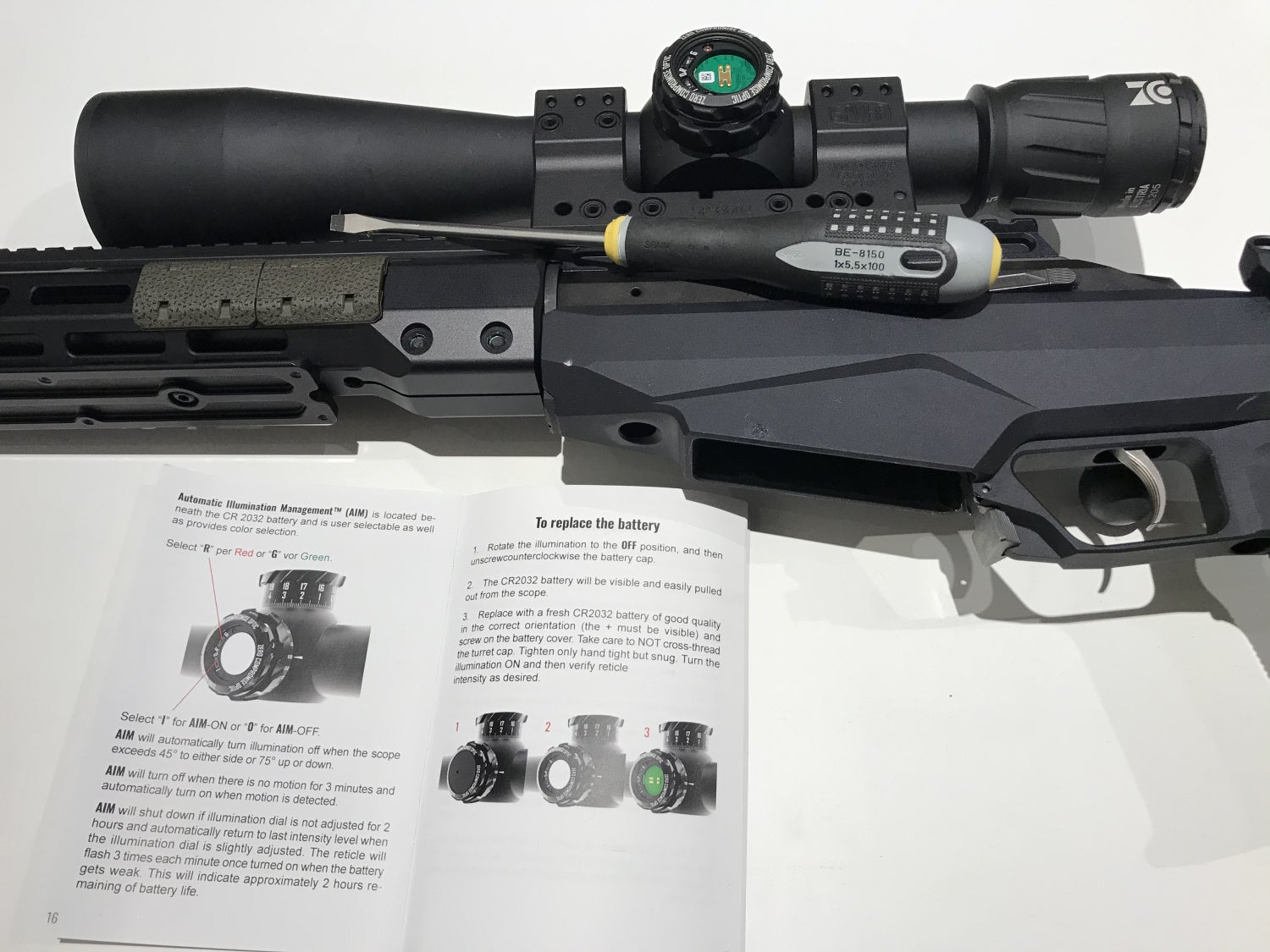
In my opinion, it doesn’t make any sense to use a cantilever mount on a rifle like the Tikka T3x. Cantilever mounts belong on platforms like the AR10/15, where there is no room for the mount base. Do you agree?

If you want to switch from a red to a green reticle, just follow the instructions in the manual and use a small screwdriver for the switch. You might need glasses or a magnifying glass for this.
Here the Automatic Illumination Adjustment (AIM) can be shut off or on as well, which is a function to help you save the battery when the scope isn’t in use. The battery is a CR 2032.
AIM will automatically turn illumination off when the scope exceeds 45° to either side or 75° up or down.
AIM will also turn off when there is no motion for 3 minutes and automatically turn on when motion is detected. The system will also shut down if the illumination dial is not adjusted for 2 hours and automatically return to last intensity level when the illumination dial is slightly adjusted.

Looking through the glass
Now that we have examined the controls and the externals of the ZC527, let’s take a (much) closer look at the inside: the optics.
Important note: no image is going to make any optic justice. I have taken images through optics for the past 10-15 years and I (and my equipment) have probably failed every time to capture what the naked eye would have seen. This is as good as we got it this time.
The “camera” in this case was an iPhone 7+ and I have cropped most of the images. The ZC527 was not mounted on a rifle, as this only makes it even more difficult. I also don’t like to walk around with a rifle in some of these places, and possibly point it at things I don’t want to destroy.
I had issues with the focus as the camera wanted to focus on the reticle rather than the target, and it is very difficult to find the eyebox (workable area for a picture) on high magnifications.
The reticle
The Mil Precision Competition and Tactical (MPCT) 2 is the preferred reticle of competition marksmen. A minimal holdover style mil reticle with enough reference points to handle nearly all situations and yet provide a clear target picture. This reticle offers 0.2 mil indications throughout the entire reticle yet provides a very clean and organized appearance helping you hit your targets faster and more efficiently
ZC527: The half-dead tree, a popular resting place for birds. 100 meters away. As you can see the camera is a bit off (top part of the picture). As with many high-power scopes the reticle becomes a bit useless in the lower regions.
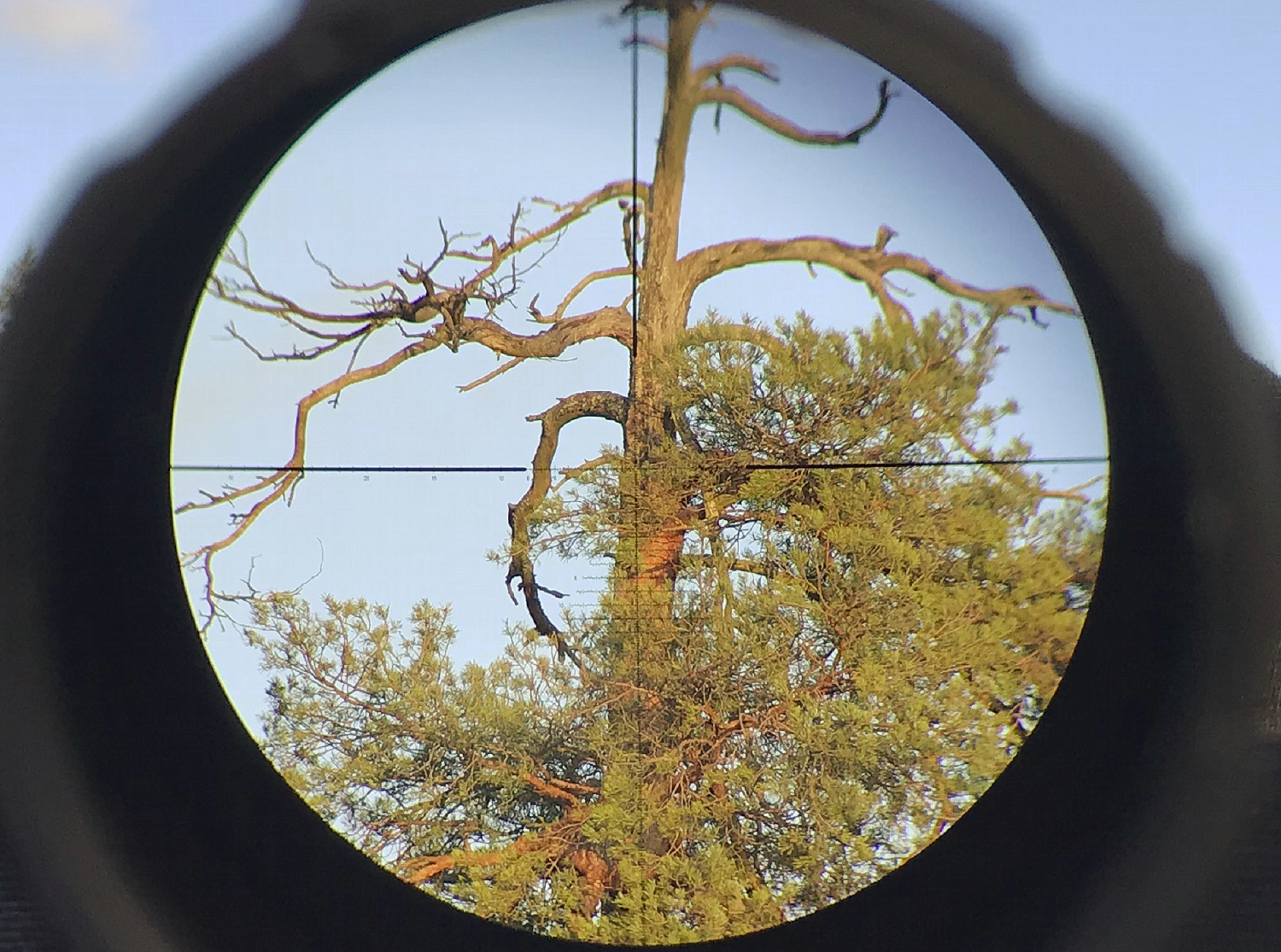
Distance 500 meters, with the sun incoming from the left. Looking at some rocks, which represent the end (or the start) of a small island. Just waiting for some Spetsnaz divers to appear from the water.
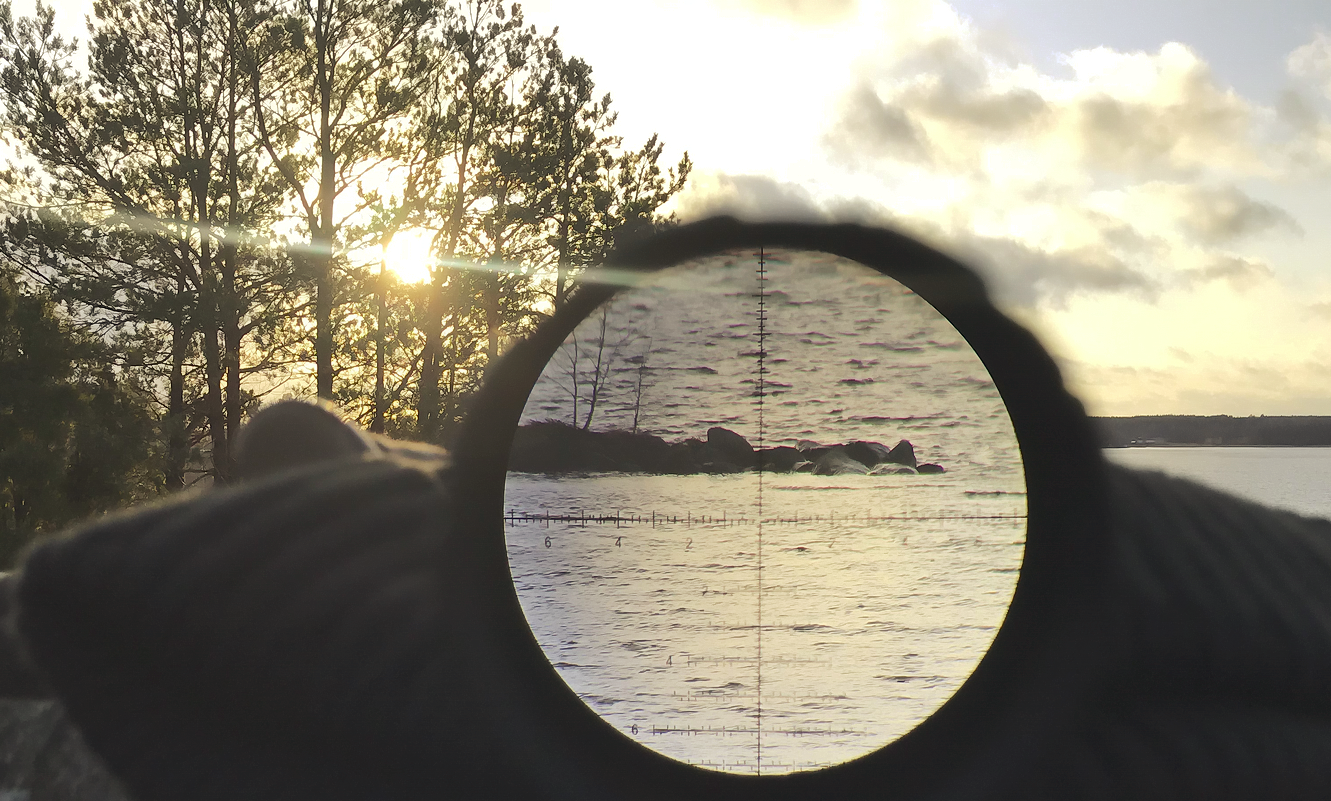
600 meters. Too cold for a swim. The reed straws came out beautifully in the sunshine. Warm colors.

Same pictures as above, but digitally zoomed in on the computer. (600 meters)
The image is clear and crisp, and even the edges can be used. The color seemed true and correct to what my eyes were seeing without looking through the glass. This is top of the line performance!

Below you can compare it to what it looks like through a Schmidt & Bender 5-25×56 PMII with the LRR-MIL reticle. Just note that the colors can be affected by how the sun is behaving, the ZC527 appears more red and yellow.

Note: Schmidt & Bender 5-25×56 PMII
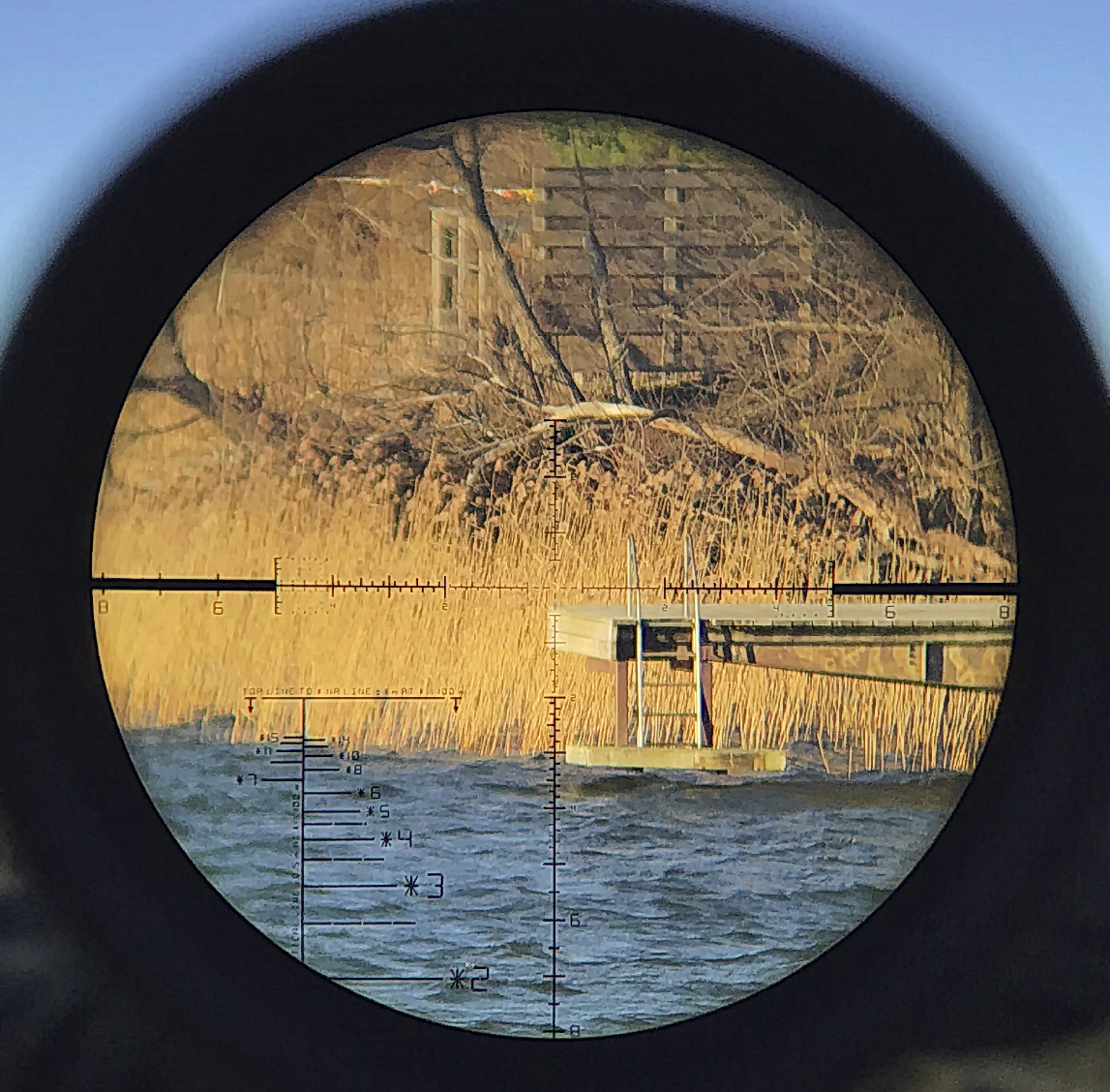
Note: Schmidt & Bender 5-25×56 PMII
ZC527: 680 meters to the pier. The camera had a hard time to find the focus, unfortunately.

Below: To compare, the Schmidt & Bender 5-25×56 PMII at about 550 meters.

Note: Schmidt & Bender 5-25×56 PMII (LRR-MIL reticle)

Note: Schmidt & Bender 5-25×56 PMII (LRR-MIL reticle)
Let’s push the optics a bit further!
ZC527: The island to the left is about 5000 meters away. The camera probably focused on the reticle this time, but the background still appears fairly well in the haze.

The islands to the right are almost 5500 meters away. That’s 5,5 kilometers or 3,4 miles away!
The lake water is very cold at this time of the year, and there was mirage coming in from the left due to the sunshine. A wonderful winter day, if it hadn’t been for the hard wind.
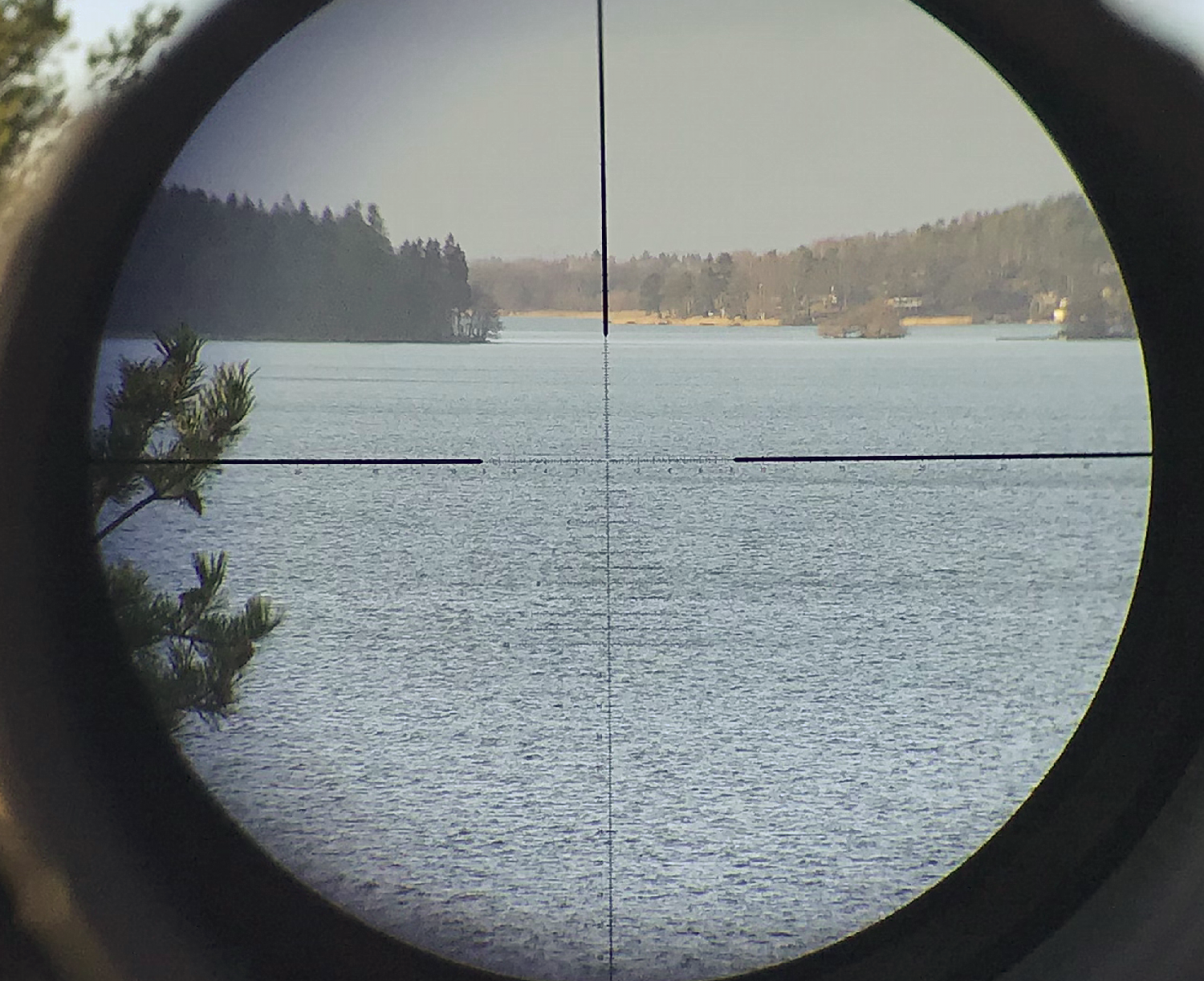
ZC527: The sailing boat is about 1800 meters away. I guess the owner is thinking there will be no ice this year, but there actually was some a few days later. Some haze from the wind and the water. Cloudy weather means low light on the houses.

Below: The same view as above, distance about 1800 meters, but through the S&B 5-25 PMII. In all fairness, the S&B had a little bit more light (sunshine, less clouds) to play with. Once again the camera cannot show the center dot of this reticle, as it’s too small. The LRR-MIL is a true long distance reticle.

Note: Schmidt & Bender 5-25×56 PMII (LRR-MIL reticle)
The naked eye cannot see the boat, but it appears nice and crisp in both scopes. The closest distance to the other side is 1700 meters, too long for any of my Laser Range Finders to make it across. Luckily there is Google Earth as a help to confirm the distances.

ZC527: About 2100 meters to the edge of the field. That’s an amazing 1.3 miles away.

Below: The distance here is about 650 meters or 710 yards. Very windy day, and couldn’t keep the scope still in the wind. This picture is taken through an EOS7D and 24 mm fixed lens, which proved difficult. Notice that the birds are sharp all the way out to the edges.

As mentioned it is also possible to change to a green reticle, instead of a red. Below is the green reticle, which feels a bit strange but it’s very easy and comfortable on the eyes actually.

Here the illumination is shut off. Notice the center dot. Distance 1250 meters or 1370 yards. The sun is going down, so less light.

This image is taken at dusk, the sun is just going down the horizon. The distance to the tower is roughly 1250 meters. I turned the illumination up high just to show the effect, I wouldn’t use this practically.

More examples of the green reticle.

Zoomed in to show the center of the reticle. “The Hulk” green reticle. Distance about 1200 meters in dusk.
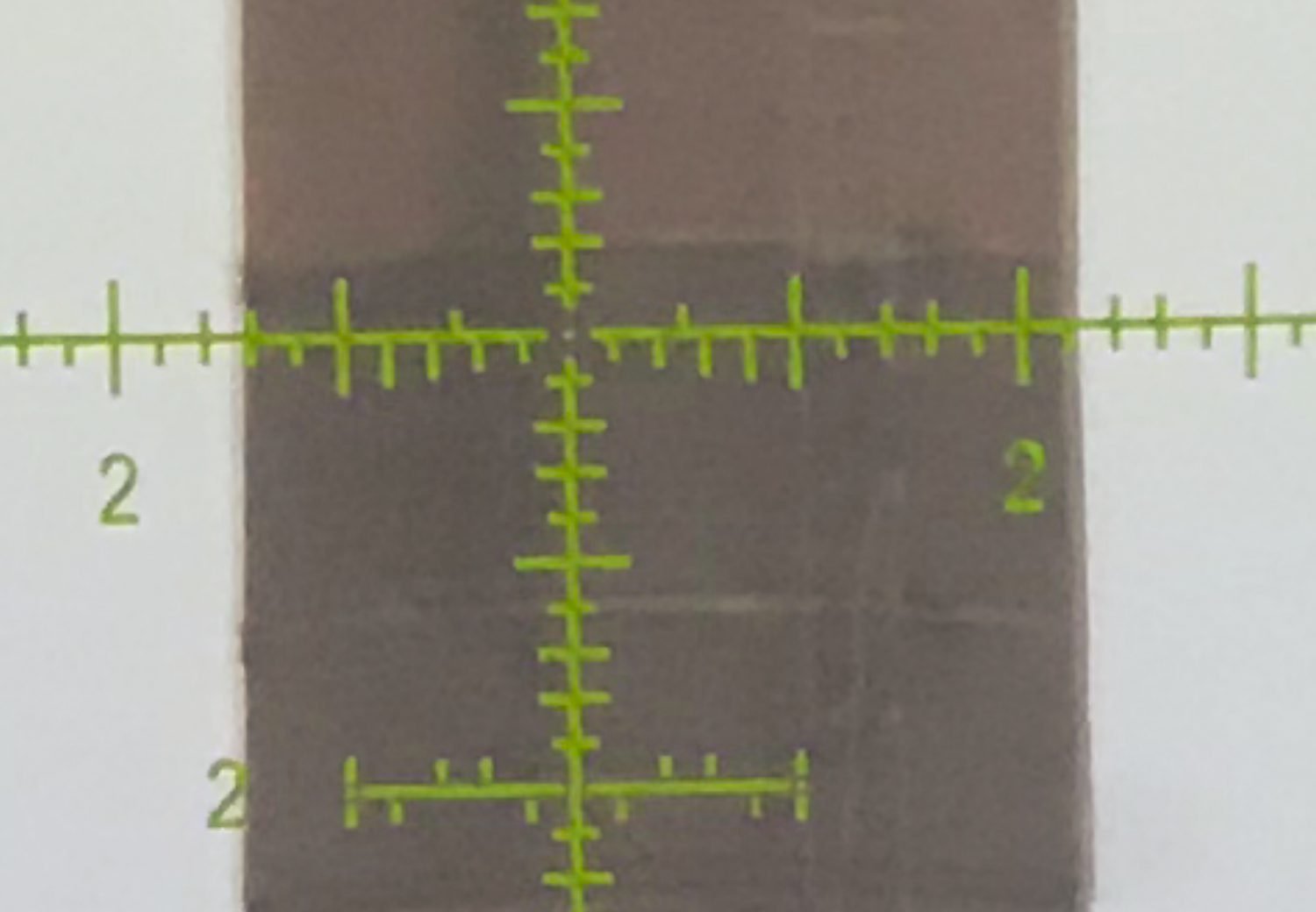
Here is the technical data and specifications of the ZC420 (4-20x) and ZC527 (5-27).
The Field of View is good. 21´ is about 6.4 meters, about a meter more than the S&B.

You can find the Operator’s Manual here: http://www.zcompoptic.com/operatoracutes-manual.html (pdf)
Coming to a conclusion
The Zero Compromise is a very nice piece of glass and metal. It is difficult to find any negatives, so the company name Zero Compromise does make sense!
Of course, people will always have their preferences in terms of ergonomy, surface finishing, turrets, availability of his or her “personal” reticle but it’s hard not to argue that the ZC527 is an excellent riflescope.
It is very hard to find a winner between the ZC527 and the S&B 5-25x56PMII, and this review was never about that really. However, when you have more than one premium scope around, it’s impossible not to compare them, especially since the S&B has become a sort of a benchmark.
I was looking into the ZC527 and thought “wow this is amazing, the S&B can never do this“. I then looked into the S&B and said to myself “yes, it could…” I continued doing this a few times, in different places, distances, light levels and so forth but the result would be the same.
If I have to come to some sort of conclusion, it might be that the ZC527 performs just a little better when the magnification reaches levels above 20 power.
As with all high magnification optics, the eyebox is not so forgiving. Put your eye in the volume where it is supposed to be, or get punished. But there are benefits with this, at least if you’re shooting from normal positions. With a tight eyebox you are forced to place your eye in the same place every time, or you don’t see the target. This decreases parallax (YouTube – Pro Tip: Understanding Parallax).
Anyone who can drop $3,600 on an optic is going to be happy with the performance. There’s always a danger with buying from a new brand, but looking at the product and knowing some of the people involved in the company and their background in the business is a pretty good assurance. I guess Tangent Theta is in a similar position, and their scopes are even more expensive.
The backside might be that it would be more difficult for you to sell a scope from a lesser-known manufacturer, as fewer people know about the brand and look for it. Hopefully, that second-hand buyer will Google and find this (and other) articles, and feel more confident.
I also found out that the kind of people who are prepared to invest this kind of money, most of them know about Zero Compromise as a brand already but might lack detailed knowledge.
One concern – I used Zero Compromise’s contact sheet and asked if they could help me with more information on the product. I also wrote that I was doing a review, as I like to be transparent. Several weeks passed, and they did not come back to me yet.
The Spuhr mount worked flawlessly as usual. If anything, the Spuhr is a Zero Issues mount.
Unfortunately, I had to give back both the scope and the mount, and I’ll miss them. There would definitely have been a lot of love for both on one of my rifles.
Further reading:
The product page for the ZC527 can be found here: http://www.zcompoptic.com/zc527.html
For TFB’s full review of the S&B 5-25×56 PMII and the Spuhr SP-4602 mount check here.
 Your Privacy Choices
Your Privacy Choices
